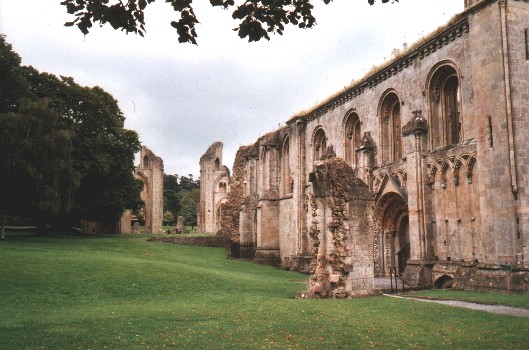
The first stone church at
Glastonbury was built by the Saxon King Ina of Wessex in the 8th
century. The church was
enlarged by St. Dunstan in the 10th century, but shortly after the Conquest
the building was demolished
and replaced by a larger Norman church. This in turn was demolished
in the early 12th century
and an even larger church was built, but this was destroyed by a fire in
1184.
With the financial support
of King Henry II, work began immediately on a new building and by the
14th century Glastonbury
was the second wealthiest Abbey in Britain, its wealth exceeded only
by Westminster. In 1539 Glastonbury Abbey was ransacked as part of King Henry VIII's
Dissolution and Abbot Richard Whiting was
hung on Glastonbury Tor.